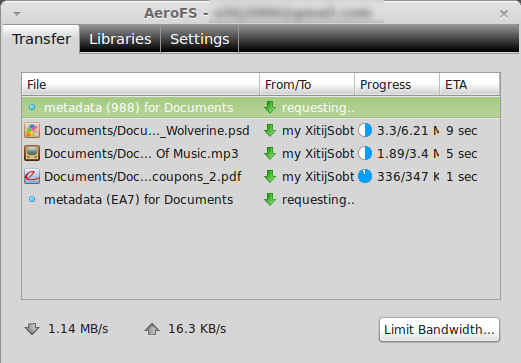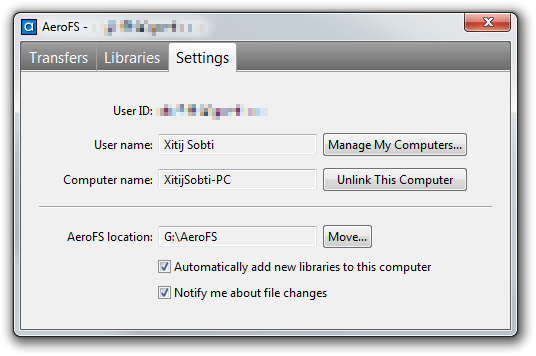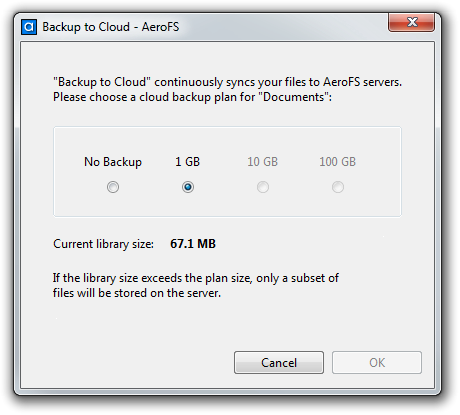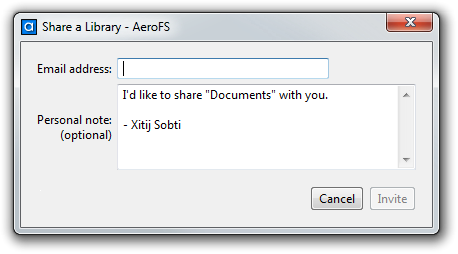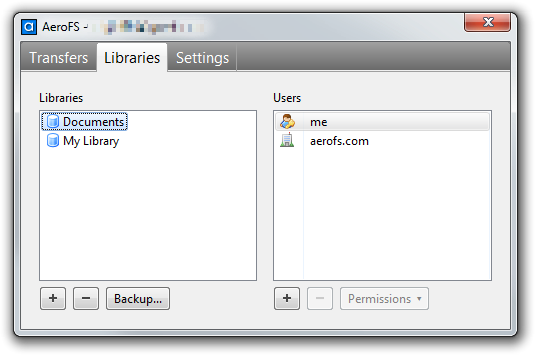AeroFS: syncing with or without the cloud


Synchronization is becoming increasingly important as we spread our lives across multiple devices, and a number of services such as Dropbox and SugarSync have arisen to take up this challenge.
Unfortunately, this increasing need for synchronization is also accompanied by an explosion of personal data. Perhaps you won’t need to synchronize every personal HD video you take, but even so, your personal data is bound to be large enough to make synchronizing it over the internet a scary idea. In India especially, the condition of internet connectivity is not conducive to a good online synchronization experience.
Traditional synchronization services allow one to synchronize to an online storage, and then synchronize from that storage to other computers. This means storage limits, or high costs, and while our personal data is beginning to reach hundreds of GB, online synchronization services offer free capacities of 2GB, 5GB at most; with storage capacities of the order of today’s hard disks priced beyond the affordability range of most people. Which means only small parts of your massive hard drives can be synced.
AeroFS is not a traditional service. It cuts the cloud storage right out of the equation, and allows you to synchronize from one computer directly to another. It does so through your internet connection (even if it’s firewalled) or even a direct LAN connection without any internet connectivity. You can go ahead and synchronize hundreds of GB of data between your laptop and desktop without worrying about fair usage restrictions or speed issues if both computers are connected to the same LAN.
After the initial synchronization, minor changes could then be synchronized over the internet as well. This way you will only occasionally need download / upload a few changed files. AeroFS directly synchronizes between your computers instead of using a central server. So even if AeroFS’s servers are down, you will continue to synchronize due to the peer-to-peer nature of the technology.
AeroFS isn’t a traditional service, but that doesn’t mean it is entirely novel. Microsoft’s Live Mesh service allows synchronization between multiple PCs or Macs with some limitations. It can even automatically synchronize settings of applications such as Internet Explorer and Microsoft Office. It also offers synchronization with the cloud of up to 5GB.
However AeroFS wins out here by having no restrictions on synchronization, and support for not only Windows and Mac OSX, but for Linux as well — a platform Microsoft is unlikely to ever support.
You may think, that to take advantage of peer to peer syncing, you’ll have to keep your computers switched on all the time but this isn’t really true. Say you have a desktop and a laptop. If they are synced to begin with, and you work on your laptop while the desktop is switched off, your desktop will go out of sync. However this can easily be remedied by keeping both on for a while to ensure that they are in sync again. Although if you work on your desktop, and realize later on that you are out of sync while roaming with your laptop, there is little much you can do, unless you keep your desktop on and connected to the internet as well.
This is where cloud synchronization services come in handy, in ensuring that your latest files are always available. Luckily, AeroFS supports cloud syncing that as well!
In AeroFS you can choose to “back up” your files to a to AeroFS servers in addition to syncing it to other computers. This increases the availability of your data, as it can now be accessed from AeroFS servers even when your own computer is offline.
AeroFS isn’t just a great tool for synchronizing between multiple computers you have, but also for sharing folders with other friends of yours using the service. You can share folders with others, and keep files synchronized between your computer and theirs.
AeroFS calls each synchronized folder a library, and these can be individually shared with other people running AeroFS. It is important to note that this is different from the concept of libraries in Windows 7. You can add multiple libraries, each with their own access restrictions.
Currently AeroFS is development, and has not yet been launched publicly. You can however apply for an invite on their site if you are interested in checking out the technology. Note however that the software and service are still not publicly released, and are probably not up to the calibre of fully polished and tested solutions. That said, in our use of the product we found no problems in operating, sharing or syncing files, which is not to say that there aren’t any.
We look forward to seeing final product as the concept and its execution is already quite amazing. The advantage of trying AeroFS now is the opportunity to provide feedback that might determine the ultimate nature of the product. Let your voice be heard, here.

